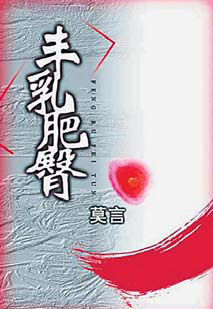Mo Yan spawns fresh controversy
By Shelley W. Chan (China Daily)
Updated: 2010-01-08 09:29
 |
Large Medium Small |
Emerging in the mid 1980s as a young experimentalist, Mo Yan is one of the greatest Chinese-language writers today.
While many writers have given up or switched to other professions, Mo continues to surprise and delight readers and critics alike with a new masterpiece every few years.
His 11th novel, Frog (蛙), published in Shanghai last month, is another tour de force, three years after the publication of Life and Death Are Wearing Me Out.
Like many of his stories, Frog is set in the novelist's hometown of Gaomi, in Shandong province. Dealing with the controversial family planning policy, the woman protagonist, Aunt, joins My Grandma in Mo's The Red Sorghum Family and Mother in his Big Breasts and Wide Hips (pictured).

However, unlike My Grandma and Mother, who are established as positive models of women's emancipation, this Aunt is half-angel, half-devil; a rich and complex character.
On the one hand, as a brilliant midwife and gynecologist, Aunt brings thousands of healthy babies into the world. On the other hand, as a loyal Communist Party member, she faithfully defends the Party's family planning policy.
Aunt marries an artisan who is known for making clay dolls. She asks her husband to make clay dolls of babies, which can be seen as a way of repentance.
Frog consists of five chapters. Somewhat similar to Mo's The Republic of Wine, published in 1992, this book is also composed in an epistolary manner. In his 1992 novel, the correspondences between the character "Mo Yan" and the amateur writer, Li Yidou, as well as Li's writing practices, form a sub-plot to the detective story in which a case of cannibalism is investigated.
In Frog, each of the five chapters is opened by a letter from the first-person narrator, Ke Dou, or Tadpole, to a respected Japanese writer, who is believed to take Kenzaburo Oe as his prototype. In the first four chapters, the stories of Aunt, as narrated by Tadpole, follow his letters.
What makes Frog different from The Republic of Wine in terms of structure is the last chapter, in which the letter is followed by a nine-act play about an absurd case of a "substitute mother" in Aunt's remaining years, written by Tadpole. The combination of correspondence, narratives and drama is a successful experiment that gives the reader a fresh reading experience.
The title, Wa, has different meanings. First of all, it is a homophone, part of the name nuwa (女媧), the legendary goddess who created human beings and patched up the sky. Secondly, this character is close to wa (蛙), meaning "child" (the only difference lies in the tones - the frog character is in first tone and the child character in second tone). Thirdly, frogs are known for their fertility and thus are totemic animals in certain areas of China.
This is not the first time that Mo has touched upon the theme of family planning in China. Similar plots have appeared in his earlier stories, such as Abandoned Child, Tunnel, and Explosions. In other words, the motif of the novel Frog existed in Mo's mind for quite a long time.
Mo always shows solicitude for the lives of his countrymen and explores controversial and sensitive topics, such as the family planning policy.
The reader may have his or her own interpretations of the story, but this is part of the attraction of reading such a richly absorbing writer.
The author is a professor with Wittenberg University. Her book on Mo Yan will soon be published.